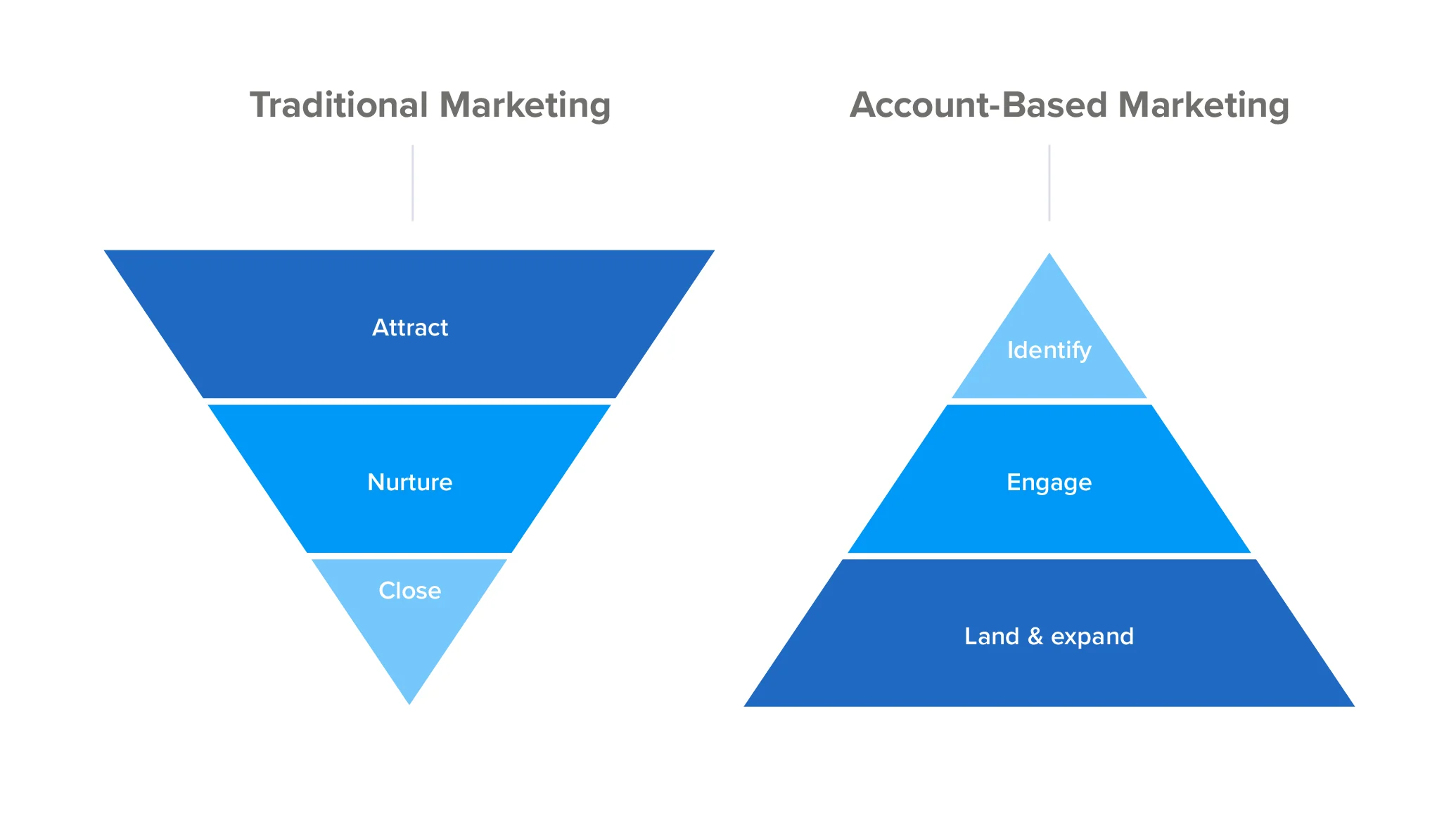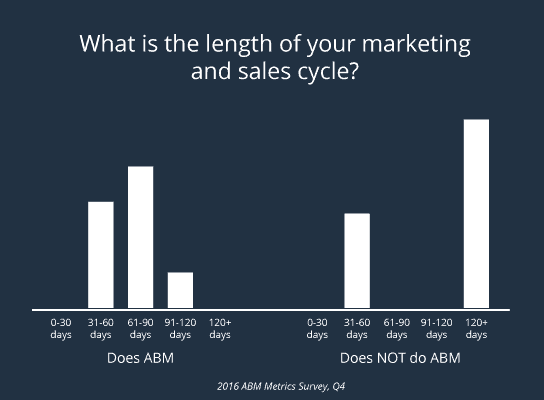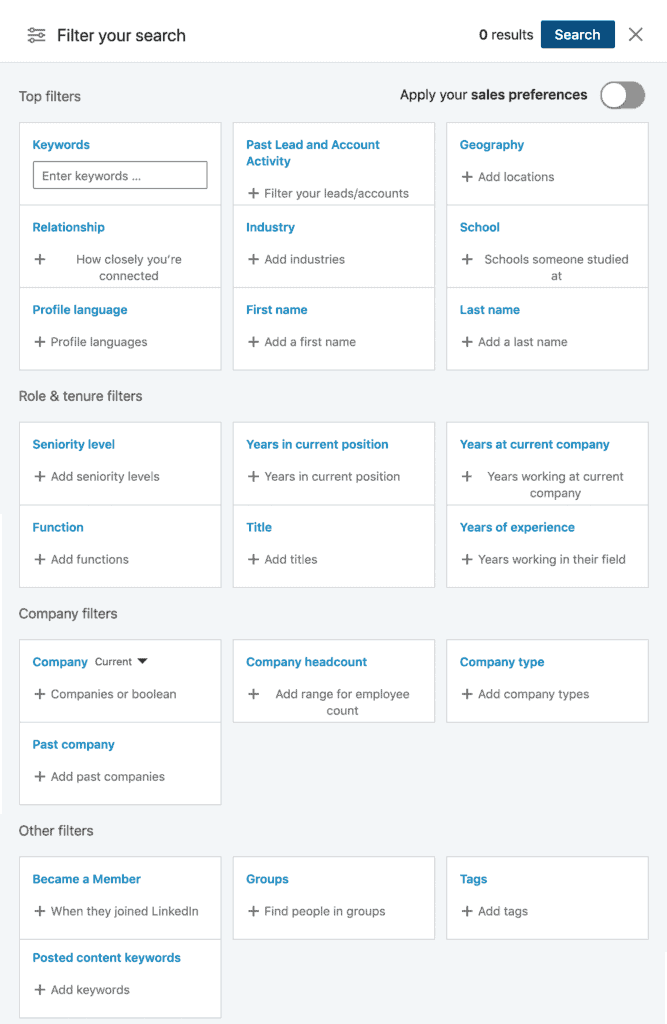Do you want to sell your products directly to the best and most high-value customers without wasting time with unqualified leads?
Well, account-based marketing (ABM) is for you.
With ABM, you can contact the target accounts and engage with them directly without targeting a broad range of potential leads. The process allows the sales and marketing team to work together to build relationships with targeted accounts, pitch the product, and sell with higher efficiency.
It is a highly targeted marketing and sales process that many businesses benefit from. In this article, I will walk you through every aspect of account-based marketing and how to implement it effectively.
So, if you are ready, let’s get started with understanding ABM in detail.
What is Account-based Marketing?
In simple terms, Account-Based Marketing, or ABM is a strategy that directs marketing resources to engage with only a specific set of target accounts. It doesn’t just call the sales and marketing team to align but instead forces them to be in sync to target the particular accounts for closure.
With ABM, rather than targeting a wide array of clients for lead generation, marketers identify the key prospects and then devise tailored programs and messages for the sales team to target these accounts and engage them throughout the buying process.
ABM takes a more holistic stance by moving beyond the scope of lead generation. In fact, account-based marketing takes you away from the conventional concepts of demographics or personas and leads you toward identifying specific organizations.

Instead of attracting all the potential leads to your ecosystem using marketing assets and then filtering out the most potential leads that match your ideal customer profile, with ABM, you start with identifying the target companies first and then using marketing and sales collaterals to engage and build relationships with them.
In other words, instead of focusing on publishing a lot of content on websites and social channels for mass audiences, with ABM, you just have to create content for particular individuals from target accounts. These target accounts comprise both existing customers and prospects.
Is Account-based marketing effective?
Account-based marketing has been used as a strategy for over 15 years since ITSMA introduced it in 2004. However businesses started realizing their effectiveness in the last couple of years when delivering personalized experiences to prospects became one of their top priorities.
According to HubSpot, 67% of B2B brands are already leveraging account-based marketing in 2020. I have found several intriguing statistics about ABM that should tell you why businesses are adopting this model –
- 62% of marketers say they can measure a positive impact since adopting ABM. (Forrester)
- 80% of marketers say ABM improves customer lifetime values, while 86% say it improves win rates. (TOPO)
- 91% of companies using ABM increased their average deal size, with 25% of respondents stating that the increase is over 50% or larger! (SiriusDecision)
I hope these statistics convince you that ABM has been effective for business, and if you are looking for an efficient way to grow your sales revenue, account-based marketing is a must-try.
7 benefits of account-based marketing
If those statistics don’t clear your doubt and you are still wondering why account-based marketing is ideal for B2B businesses, here are the top benefits of using ABM-
1. Shorter sales cycle
The traditional sales cycle can be typically long and involve a lot of time. AMB helps streamline the sales process by targeting specific accounts and helps save time and money. It removes unqualified prospects early on to ensure the sales and marketing team only focuses on prospects that are likely to get converted, instead of the problematic accounts.
Most companies using ABM have a sales cycle of 90 days, whereas those that don’t take over 120 days for sales.

2. Aligning marketing and sales
ABM ensures a more targeted marketing approach that is directly in sync with the sales. The alignment between sales and marketing ensures improved communication that can add to the organization’s growth.
The modes of interaction, sharing collaterals, message tonality, and the final content used between marketing and sales are synchronized. It will help bring transparency and keep them focused on the same goals.
3. Personalized marketing approach
In place of a conventional marketing strategy, ABM helps deliver personalized messages for target accounts. Keeping in mind the attributes and needs of specific customers leads to tailored creative assets that deliver consistent and effective communication.
Account-based marketing can enable you to target every stakeholder in a specific target account with a degree of personalization. Instead of using blast email marketing, one-to-one emails, direct messages, or targeted ads would fare better. Since a lot of research goes into ABM, it delivers better results than traditional means.
4. Clear ROI
The most amazing benefit of account-based marketing over traditional marketing is that it is clear and precise. It allows you to measure the Return on Investments (ROI) accurately and use it to benefit your business. More than 80% of marketers using ABM who measure ROI said it outperforms other marketing investments.
Besides getting a clear ROI, ABM can also assist in increasing it. With this strategy, you only select a few accounts, go entirely into the sales process, and manage to close them. The target accounts you have chosen will undoubtedly have high overall lifetime value, helping increase the ROI.
5. Fewer wasted resources
Using account-based marketing reduces the number of accounts to be targeted. It frees up time and money and also reduces the wastage of precious resources by optimizing them in the best way. After a year of use, ABM also increased revenue by 10% for 60% of the users.
6. Improves customer relations
Account-based marketing is a revolutionary method that can ideally replace the age-old methods of nurturing customer relations. It can help with demarcating the clients between good and bad and makes it easier for the team to focus their attention on the right ones.
When the team maintains the required communication with the target accounts, it helps strengthen customer relations. 80% of marketers reported that ABM significantly benefited them in retaining and expanding existing client relationships.
7. Better reporting
While account-based marketing may involve more cost in implementation, it makes it easier to report the cost due to fewer metrics. The effectiveness of any marketing campaign can be ascertained by using the metrics. With more tangible metrics, you can target an account. With ABM, finding these metrics becomes an easy task.
Instead of pulling out large data sets, there are only a few things to be reported. It helps make the process of setting goals and analyzing the reports much easier. ABM can also assist you in documenting the data for all the accounts and setting better goals after the quarter is over.
How to implement account-based marketing?
So, do you think ABM can be effective for your business too? If so, you won’t regret adopting account-based marketing for your business growth.
However, to implement it successfully, you need to build an ABM team – a team of people from both sales and marketing teams.
Afterward, here are the steps to help you implement account-based marketing and grow your business.
1. Select your high-value targets
The first thing for you is to go through your customer base and identify the ideal accounts. Your idea of an ideal customer can vary depending on the industry and other descriptors. Ideally, it comes down to long-term, profitable, and satisfied customers who benefit immensely from your offerings & provide you significant value in exchange.
Once you have listed out your top accounts, distribute all the accounts in different categories based on attributes like industry, company size, annual revenue, etc. Now, you can define each category as your ideal customer profile and start hunting down similar companies to sell your solutions.
You can keep a check on existing accounts that are open to expanding their business with your company or new accounts that fit your criteria. One of the easiest ways to find new target accounts is using LinkedIn Sales Navigator, where you can find companies that match your ideal customer profile using their advanced search engine.

2. Map decision-makers to specific accounts
In B2B, decision-making is not in the hands of a single individual in the company, not even the CEO can make a decision alone that can impact other departments.
In most cases, more than two people are involved in the decision-making process. At this step, your goal should be to identify those key people who can influence the purchasing decision.
You can map out those key individuals for an account based on their job function and how much they can influence buying or block purchasing decisions.
Remember, the decision-makers in a company are the managers, VPs, and CXOs of the department. Still, those who will use or be affected by your solution are usually the ones who can influence the decision.
So, instead of just targeting the CEO of the target company, engaging with those key people on their pain points with personalized content will help you direct their decisions in your favor.
3. Identify relevant marketing channels
An ABM approach can only yield results if the right messaging channel is used for the account. While one channel may work for specific accounts, it can fail to generate results for another.
For instance, email marketing can work excellently in the case of existing leads, but it doesn’t work for wider reach. It is imperative to understand the demographics of the channel and the key individuals that your strategy must target. You can then experiment and personalize while choosing the right channel.
Although email marketing, social media, and search engines are usually cost-effective and relevant marketing channels, you must also include offline events, podcasting, and digital events to stay connected with old accounts and nurture prospects.
4. Create a targeted marketing strategy
After you have selected the target accounts and individuals, you can develop a personalized campaign that can resonate with them. The key to any successful Account-based marketing campaign is building and nurturing relationships with the clients.
The marketing team can devise all your communications keeping in mind the needs, interests, and challenges of every account and key stakeholder. You must have a unique proposition and relevant content for a stakeholder that can influence their buying decision.
On the other hand, the sales team can provide invaluable consultation about the buying cycle of the account and present the information to the accounts.
Using a truly personalized approach will include a unique message for each individual within the account. It will help instill confidence among the clients and will prove you as a trusted and well-informed partner.
5. Execute the campaign
Once you have identified the marketing channels and designed your marketing strategy, it’s time to create campaigns and put them to work.
Your marketing and sales team can engage with the accounts using a personalized strategy. The campaign must be executed, keeping in mind the personalized content and the right marketing channel. It is essential for both the marketing and sales teams to be in sync to ensure the campaign is executed properly throughout the buyers’ journey.
You can divide the various target accounts into levels based on their state of engagement and opportunity size. You can give one-to-one attention to the accounts on the top level and use a programmatic approach for the other levels. Avoid relying on static account lists. Instead, try to continually prioritize, expand, and kick off the accounts.
6. Measure and optimize
In the case of account-based marketing, measuring the impact of your strategy can be different from traditional marketing. The sales and marketing teams jointly become responsible for sales and revenue. So, instead of only tracking the marketing metrics you have to follow the KPIs that impact the revenue directly.
The two most commonly tracked metrics to measure ABM efforts are the number of pipelines created and account engagement. Here are other essential account-based marketing KPIs that you should track:
- No. of Contacts created
- No. of deals created
- No. of deals won
- Deal-to-close duration
- Net revenue
- Percentage of deals closed
- Account churn rate
Wrapping Up
While account-based marketing may look overwhelming, it doesn’t have to be. By simply identifying the key clients and aligning the work of the sales and marketing departments, you can successfully implement the ABM strategy.
It can help you increase conversions, boost sales, and grow your business. Given the benefits it offers to a business, it is safe to say that account-based marketing is effective, and if your business demands it, you must try it!
